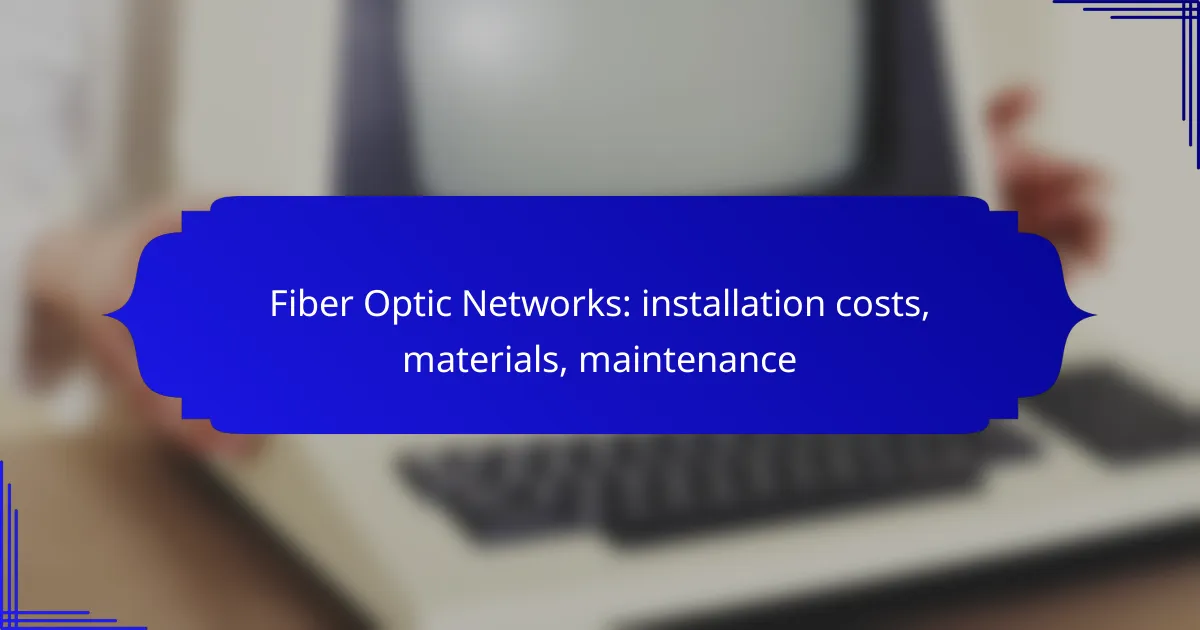Fiber optic networks offer high-speed data transmission, but their installation costs can vary widely depending on factors such as location and project scale, often ranging from several thousand to tens of thousands of New Zealand dollars per kilometer. The installation process requires specialized materials, including cables and connectors, which are essential for maintaining network efficiency and durability. Regular maintenance, involving inspections and repairs, is crucial to ensure optimal performance and longevity of the network.
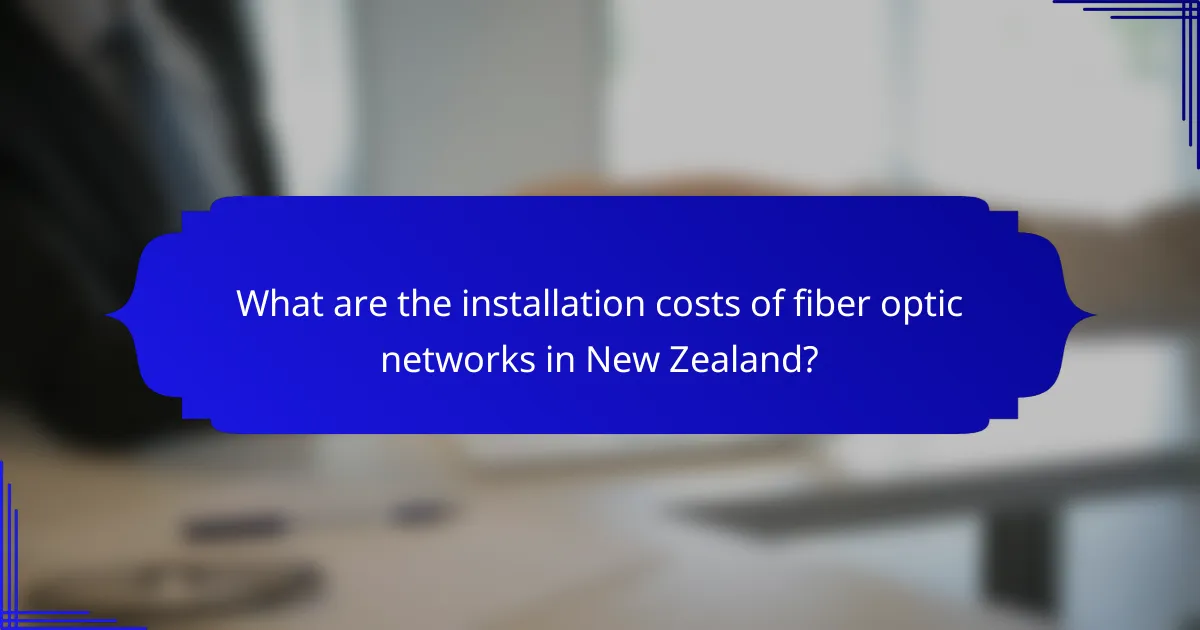
What are the installation costs of fiber optic networks in New Zealand?
The installation costs of fiber optic networks in New Zealand can vary significantly based on several factors, including location and project scale. Generally, these costs can range from several thousand to tens of thousands of New Zealand dollars per kilometer.
Average installation cost per kilometer
The average installation cost for fiber optic networks in New Zealand typically falls between NZD 20,000 and NZD 40,000 per kilometer. This range can fluctuate based on urban versus rural settings, with urban installations often being more expensive due to higher labor and material costs.
In some cases, costs may be lower for larger projects that benefit from economies of scale, while smaller installations may incur higher per-kilometer costs due to fixed expenses.
Factors influencing installation costs
Other considerations include the choice of materials, such as the type of fiber used and whether additional features like conduit or protective casing are necessary. Regulatory requirements and permits can also add to the overall expenses.
Cost comparison with copper networks
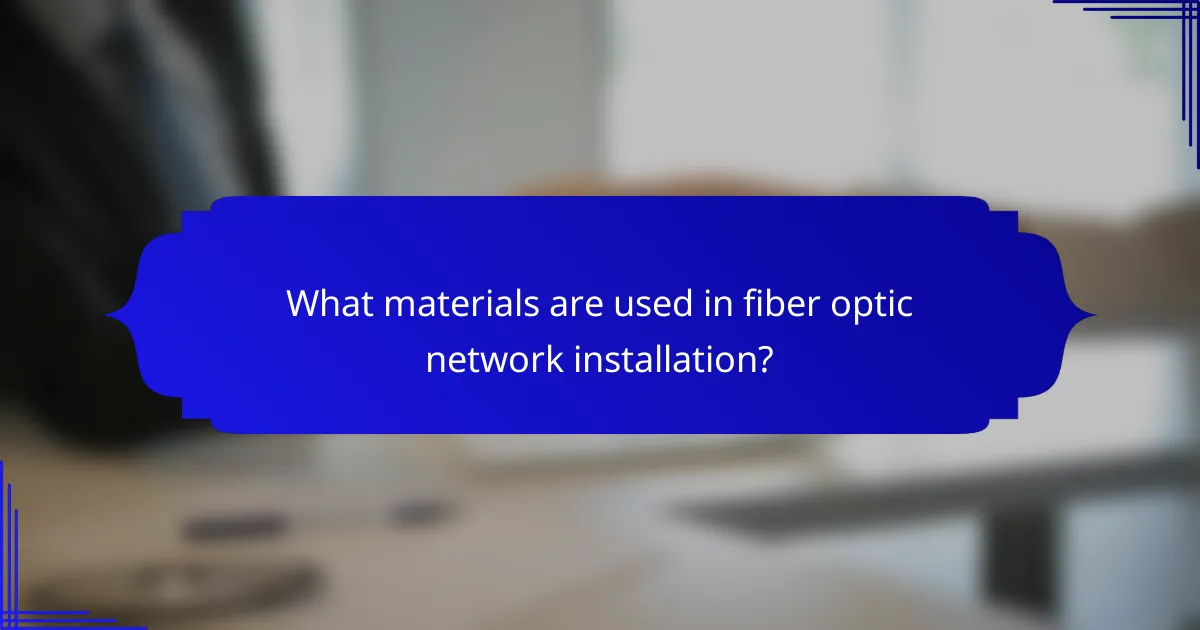
What materials are used in fiber optic network installation?
Fiber optic network installation primarily involves specialized cables, connectors, and protective enclosures. The materials used are crucial for ensuring efficient data transmission and network durability.
Types of fiber optic cables
There are two main types of fiber optic cables: single-mode and multi-mode. Single-mode cables are designed for long-distance communication and have a smaller core, allowing light to travel straight down the fiber. Multi-mode cables, with a larger core, are suitable for shorter distances and can carry multiple light signals simultaneously.
When selecting cables, consider factors like distance, bandwidth requirements, and installation environment. For example, single-mode cables are typically used in telecommunications, while multi-mode cables are common in local area networks (LANs).
Essential installation equipment
Key equipment for fiber optic installation includes fusion splicers, optical power meters, and cable testers. Fusion splicers are used to join fiber ends with precision, ensuring minimal signal loss. Optical power meters measure the light power in the fiber, helping to verify the network’s performance.
Additionally, tools like cleavers and installation kits are necessary for preparing and handling cables. Proper equipment is vital for achieving high-quality installations and avoiding common pitfalls such as excessive signal attenuation.
Local suppliers of fiber optic materials
Finding reliable suppliers for fiber optic materials is essential for successful installations. In the U.S., companies like Corning and OFS offer a wide range of cables and components. In Europe, suppliers such as Prysmian Group and Nexans are prominent in the market.
When sourcing materials, consider local availability, pricing, and support services. It’s beneficial to establish relationships with suppliers who can provide technical assistance and timely deliveries, ensuring your projects run smoothly.
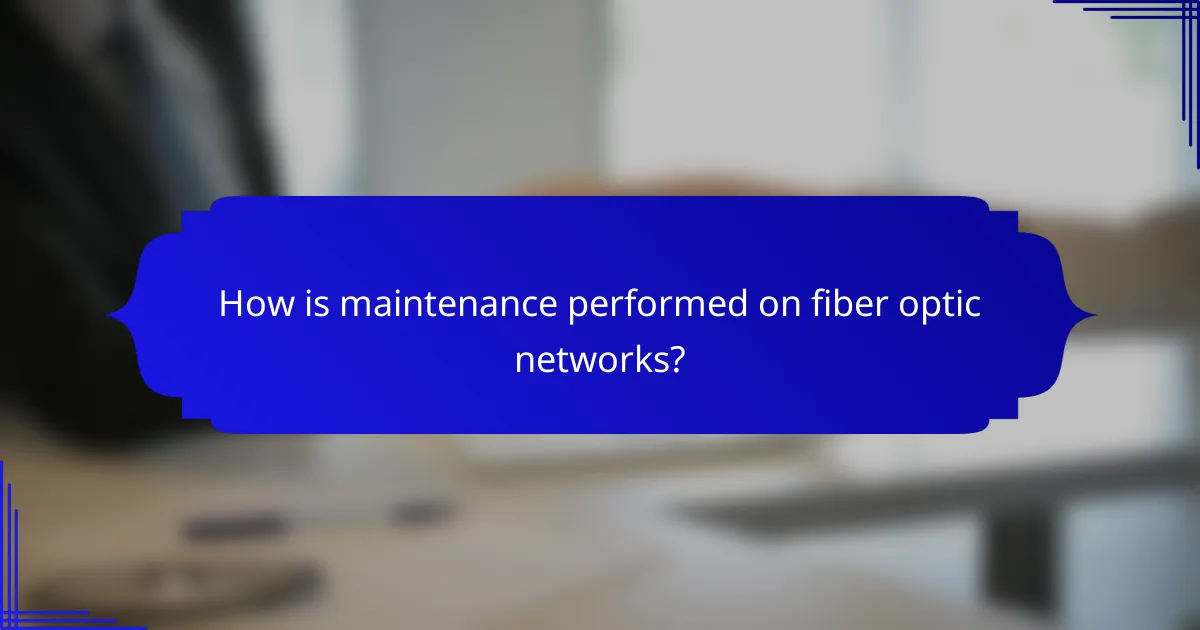
How is maintenance performed on fiber optic networks?
Maintenance of fiber optic networks involves regular inspections, cleaning, and repairs to ensure optimal performance. Technicians utilize specialized tools to identify issues and perform necessary repairs, which can include replacing damaged cables or connectors.
Routine maintenance practices
Routine maintenance for fiber optic networks typically includes visual inspections, cleaning of connectors, and testing signal strength. Technicians often perform these checks at scheduled intervals to prevent potential issues from escalating.
Cleaning fiber optic connectors is crucial, as dirt and dust can significantly degrade signal quality. Using proper cleaning tools and techniques can help maintain the integrity of the network.
Common issues and repairs
Common problems in fiber optic networks include cable breaks, connector damage, and signal loss. These issues can arise from physical stress, environmental factors, or improper installation.
Repairs often involve splicing or replacing damaged sections of cable. It is essential to address these issues promptly to minimize downtime and maintain service quality.
Maintenance service providers in New Zealand
In New Zealand, several companies specialize in fiber optic network maintenance, offering services such as inspections, repairs, and upgrades. Providers may vary in terms of expertise and pricing, so it is advisable to compare options.
When selecting a maintenance service provider, consider their experience, customer reviews, and response times. A reliable provider can help ensure that your fiber optic network remains efficient and effective.

What are the prerequisites for installing fiber optic networks?
Installing fiber optic networks requires careful planning and preparation, including site assessments and understanding local regulations. These prerequisites ensure that the installation process is efficient and compliant with necessary standards.
Site assessment requirements
A thorough site assessment is essential before installing fiber optic networks. This involves evaluating the physical location, existing infrastructure, and environmental factors that may affect installation. Key considerations include the type of terrain, accessibility for equipment, and proximity to existing utilities.
During the assessment, it’s important to identify potential obstacles such as buildings, trees, or other structures that could interfere with the installation. Engaging with local experts can provide insights into the best routes for fiber placement and any challenges that may arise.
Permitting and regulatory considerations
Obtaining the necessary permits is a critical step in the installation of fiber optic networks. Local governments often have specific regulations regarding digging, construction, and the use of public right-of-ways. It’s advisable to check with local authorities to understand the required permits and any associated fees.
Additionally, compliance with safety and environmental regulations is crucial. This may include adhering to standards set by national or regional bodies, which can vary significantly between locations. Failing to secure the proper permits can lead to delays and increased costs, so thorough research and planning are essential.
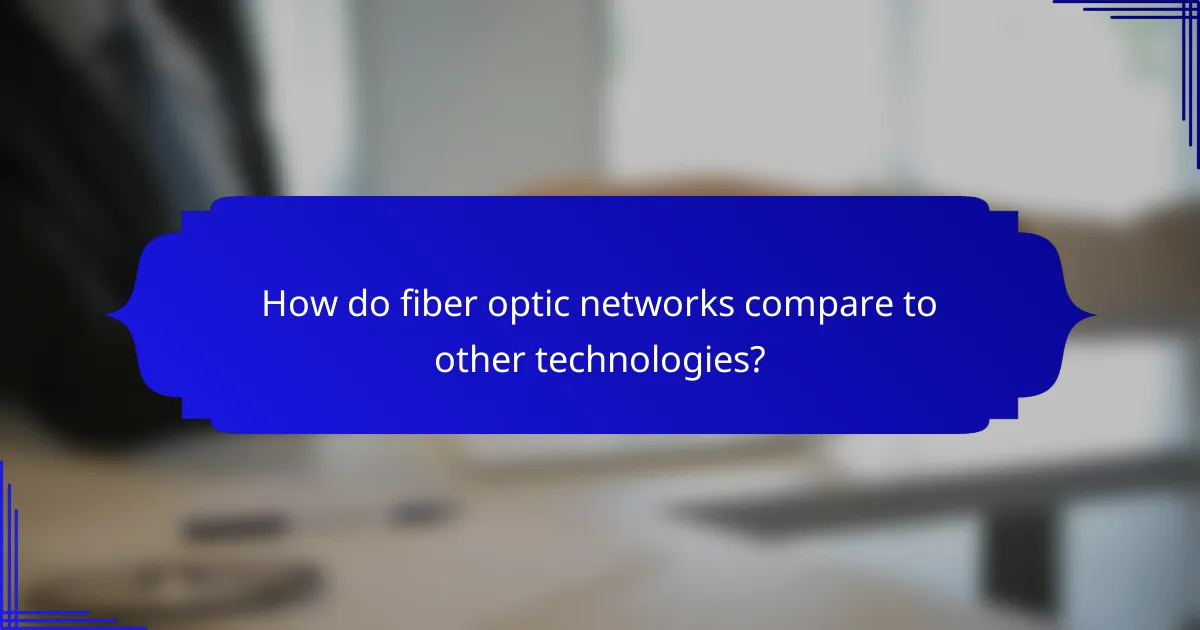
How do fiber optic networks compare to other technologies?
Fiber optic networks generally offer superior performance compared to other technologies like DSL and satellite. They provide higher speeds, lower latency, and greater reliability, making them a preferred choice for both residential and commercial applications.
Fiber vs. DSL performance
Fiber optic networks significantly outperform DSL in terms of speed and bandwidth. While DSL typically offers download speeds ranging from a few Mbps to around 100 Mbps, fiber can deliver speeds exceeding 1 Gbps, depending on the provider and plan.
Additionally, fiber connections maintain consistent performance over longer distances, whereas DSL speeds can degrade with distance from the service provider’s central office. This makes fiber a more reliable option for users requiring stable and high-speed internet access.
Fiber vs. satellite connectivity
When comparing fiber optic networks to satellite connectivity, fiber is usually the clear winner in terms of latency and speed. Satellite internet can experience latency of 600 ms or more due to the distance signals must travel, while fiber typically offers latency in the low tens of ms.
Moreover, fiber connections are less susceptible to weather-related disruptions, which can significantly affect satellite performance. For users in rural areas where fiber is available, it is often recommended over satellite for a more reliable internet experience.

What are the emerging trends in fiber optic technology?
Emerging trends in fiber optic technology focus on enhancing speed, capacity, and efficiency. Innovations such as advanced materials and new installation techniques are driving down costs while improving network performance.
Advancements in fiber optic materials
Recent advancements in fiber optic materials include the development of bend-insensitive fibers and high-capacity cables. Bend-insensitive fibers allow for tighter installation in confined spaces without signal loss, making them ideal for urban environments.
Additionally, new materials like plastic optical fibers (POF) are gaining traction for short-distance applications due to their flexibility and lower costs. These materials can be easier to install and maintain, especially in residential settings.
When selecting materials, consider the specific application and environment. For instance, outdoor installations may require more robust, weather-resistant materials, while indoor setups can utilize lighter, more flexible options.
